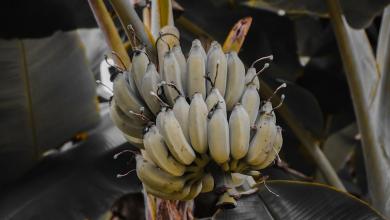In the hunt for the best tea of 2025, we tested more than 70 options — our dietitian says the top pick should be stocked in every pantry
Packed with health benefits and endless flavor possibilities, it’s no wonder tea is one of the most widely consumed beverages in the world, second only to water. Danielle VenHuizen, a Seattle dietitian and owner of Food Sense Nutrition, explains that the best teas are packed with beneficial compounds, including L-theanine, polyphenols and various phytochemicals that may support digestion, help manage blood pressure and even promote better sleep.
The health benefits provided by tea depend on the type of tea you’re drinking, explains VenHuizen. Hibiscus tea, for example, may be helpful for lowering blood pressure, and ginger tea may help soothe indigestion and could have benefits for healthy aging. VenHuizen adds that chamomile tea, while known for its calming properties, may also fight bloating and ease digestion.
Looking for a tea with a range of benefits? Green tea is a top choice thanks to its high antioxidant content. Specifically, green tea contains epigallocatechin gallate (EGCG) — a powerful compound with potent anti-inflammatory effects. While research is ongoing, EGCG may support brain health and protect against chronic diseases like cancer. And don’t forget white and black tea, both of which also contain antioxidants and can be a less jittery way to get a moderate dose of caffeine when compared with a morning cup of coffee.
With so many options, how do you choose which tea to buy? That’s where we come in! To find the best teas of 2025, we consulted three registered dietitians, a certified herbalist and a medical doctor to learn about the health benefits of different types of tea. We then tested over 70 teas from 18 different brands, evaluating each tea on its taste, quality and overall value. Whether you’re looking to relax, energize or give your immune system a little boost, we compiled a list of the top teas worth adding to your collection.
A note on supplements
Some of the products included on this list are dietary supplements. Statements about these products have not been evaluated by the Food and Drug Administration. These products are not intended to diagnose, treat, cure or prevent any disease. Dietary supplements are not appropriate for everyone and may interact with other supplements or medications, so talk to your health care provider before adding a dietary supplement to your routine.
Best overall tea of 2025
Other teas we recommend for 2025
Types of teas
From high-caffeine brews to herbal blends, it can be challenging to know which tea best fits your wellness needs and preferences. Here’s a breakdown of some of the most popular types of tea to help you decide:
-
Green: Green tea is known for its grassy, fresh flavor and high levels of catechins — antioxidants that may support brain function and heart health. Green tea is made from the leaves of the Camellia sinensis plant and contains moderate amounts of caffeine for a gentle energy boost. Unlike some other types of tea, green tea is nonoxidized. Oxidation in tea refers to a natural chemical process in which enzymes in the tea leaves react with oxygen after they are rolled. This process affects the color, flavor and aroma of the tea leaves.
-
Black: Black tea is also made from the leaves of the C. sinensis plant, but it’s fully oxidized, giving it a rich, bold flavor and dark color. It contains more caffeine than other teas and is rich in antioxidants like theaflavins, which may support heart health.
-
White: White tea is nonoxidized, with a delicate, subtle flavor and lower levels of caffeine.
-
Matcha: This powdered form of green tea offers a concentrated dose of antioxidants like EGCG. Its creamy, umami flavor pairs with a gentle energy boost thanks to its unique combination of caffeine and L-theanine, an amino acid known for its calming effects and potential to promote relaxation without causing drowsiness.
-
Oolong: This partially oxidized tea offers a balance between black and green tea in terms of flavor and caffeine content.
-
Chai: This spiced black tea is traditionally mixed with milk and a sweetener. It’s infused with spices like cinnamon, cardamom and ginger and is known for its warming, aromatic properties.
-
Herbal: These naturally caffeine-free teas contain herbs, flowers and fruits rather than C. sinensis leaves. They offer various flavors and potential health benefits, from calming chamomile to gut-soothing ginger.
-
Flavored: These products offer a combination of tea leaves with added fruits, flowers or spices to enhance the taste. Some may even include sweeteners, like stevia or sugar. Popular varieties include vanilla black tea and jasmine green tea.
-
Functional: These wellness teas are made with ingredients such as adaptogens, herbs or vitamins to target specific health benefits, such as stress relief, better sleep or enhanced immunity. Adaptogens are natural substances that may help the body adapt to stress and maintain balance, promoting overall well-being. However, many adaptogens are not safe for certain populations and should be discussed with a doctor before taking.
Factors to consider when purchasing tea
Maddie Miles, a board-certified herbalist and CEO of Peace Love Hormones, suggests several key factors when purchasing tea. First, consider the caffeine content. “If you’re sensitive to caffeine or looking to reduce your intake, there are plenty of great herbal teas that are naturally caffeine-free,” she explains.
Miles also advises choosing reputable brands that are transparent about their sourcing and production practices. And, if you’re after specific health benefits, “ensure the wellness benefits align with your personal health goals,” she adds.
When it comes to tea type, Miles recommends loose-leaf tea, saying, “Loose-leaf tea is often considered superior because it provides better flavor and a more medicinal infusion.” Why? It typically has larger, less processed leaves, meaning they retain more of their natural oils and flavors.
How we chose the best tea
We tested over 70 varieties from 18 different brands, evaluating each using a detailed set of criteria. These factors included tea variety and form, flavor profile and aftertaste, caffeine content, standout qualities and value for money. This thorough process ensured our recommendations cater to a wide range of preferences and needs.
We also consulted a board-certified herbalist, a medical doctor and three registered dietitians to gather expert insights on the potential health benefits of tea and select the best one. Our writer and primary tester is also a registered dietitian, adding another layer of expertise to our evaluation process.
FAQs
What is the difference between loose-leaf tea and tea bags?
Miles explains that loose-leaf tea is typically superior because the leaves are larger and less processed, allowing them to retain more natural oils and flavors. On the other hand, “tea bags often contain lower-grade leaves that are chopped into smaller pieces,” she says, “which can result in a less favorable taste and medicinal properties.”
What are the health benefits of drinking tea?
“Tea contains powerful components that [may] support heart health, gut health and relaxation,” says Alyssa Simpson, a digestive health dietitian in Phoenix. She explains that certain teas offer unique benefits. For example, green tea contains catechins, which may be protective of heart health, while polyphenols in green and black tea have been linked to a reduced risk of cognitive decline. However, certified intuitive eating counselor Elizabeth Harris notes that most studies on the benefits of tea are observational, and further research is needed to confirm these potential benefits.
Are there any risks associated with drinking tea?
“The tannins in tea may interfere with iron absorption,” says Simpson, which may be a significant downside for those with iron deficiency anemia. However, she explains this can be mitigated by drinking tea between meals rather than with them. Also, “people sensitive to caffeine or with acid reflux may need to opt for herbal, caffeine-free teas to avoid exacerbating their symptoms,” she adds.
Caution should also be used when it comes to herbal teas, as they may contain ingredients that are unsafe for people who are pregnant, breastfeeding, have certain health conditions or are taking prescription medications. In these cases, folks should talk with a health care professional before adding an herbal tea to their wellness regimen.
How long does tea stay fresh, and what is the best way to store it?
“The key to keeping dried herbs and tea fresh is to keep them in an airtight container away from light, heat and moisture — think cool, dark and dry,” says Miles. She emphasizes that tea can quickly lose its flavor when exposed to these elements, making proper storage crucial. For preserving freshness, she recommends using a sealed glass jar.
How do you brew the perfect cup of tea?
Miles says brewing the perfect cup of tea depends on water temperature, steeping time and the herbs used. “Generally, delicate green and white teas should be brewed with water just below boiling — around 160-180°F,” she explains. In contrast, “black tea can handle higher temperatures of around 200°F.” She notes that herbal teas can vary, but a good rule of thumb is to steep them for 5 to 7 minutes to extract their flavor and medicinal properties fully. Finally, Miles adds, “The perfect cup of tea isn’t just about the recipe — it’s about the intention and mindfulness you bring to the moment.”
Other products we tested
With 18 companies sending us teas to try, we sampled a lot of teas — over 70! And that doesn’t even include all of the teas we tested for other roundups, including 16 black teas, 20 green teas, 12 matcha powders, 13 teas for sleep and 11 teas for stress and anxiety. So, in total, it was closer to 150 options, although there was some overlap between some categories.
Here are some other teas we tried, what we liked about them and what prevented them from making this “best tea” list:
-
Adagio Teas: We sampled Peppermint, Earl Grey Bravo, Peach Oolong, White Peach, Coconut and Masala Chai. The peppermint was very minty and earthy, which may not appeal to everyone. The Earl Grey Bravo was pleasant, but it didn’t stand out as much as other Earl Greys we sampled. The Coconut tea, while enjoyably coconut-forward, was too bitter. Both the Peach Oolong and White Peach were enjoyable, but their mild flavors left us wanting more. Our favorite was the Masala Chai, which boasted a lovely balance of spices. However, a faint mouth-drying sensation lingered after drinking it, preventing it from being our top choice for chai.
-
Hollywood Hair Bar: This Hair Tea stood out because it can be consumed or applied topically. It had an earthy, sweet flavor that was too overpowering for our palate. However, we’re considering trying it as a conditioning hair rinse, as suggested by the company.
-
Leaves of Leisure: We sampled Snow Angel, Picnic in the Park, Bath Time, Sun Soaked and Autumn Breeze. Snow Angel, a refreshing mint tea, was delightful, though not our favorite. Bath Time was too heavy on the lemongrass and rosemary, while Sun Soaked and Picnic in the Park were enjoyable but not our top picks for fruity teas. Autumn Breeze had a lovely blend of spices but was a bit too sweet for our liking.
-
Magic Hour: In addition to the mint tea that made our list, we tested Ruby Moon, Child’s Pose, Lucid Dreams, Queen of the South, Queen of the Tropics and Aquamarine Dream. The teas were overall soothing to drink, with Aquamarine Dream being a top contender as the best tea for stress and anxiety. Its mild, sweet, fruity flavor profile, enhanced by natural pineapple and blueberry flavors, provided a pleasant sipping experience. Ultimately, Organic India Tulsi Ashwagandha Tea provided a better overall value, though you can’t go wrong either way.
-
Moosa: We tried three other Moosa flavors: Immune Citric, Passion and Tropical Medley. We felt Immune Citric would be perfect with a dash of honey if you’re fighting a cold, while the Tropical Medley was a little too pineapple-heavy. Passion was pleasant, though adding honey could have enhanced its flavor.
-
Numi: In addition to the Sweet Slumber tea that made our list, we tried three of Numi’s green teas: Hojicha, Yuzu Bancha and Kukicha. Hojicha was rich and grassy, but we didn’t like it as much as our top choice. Both Kukicha and Yuzu Bancha would benefit from more robust flavors.
-
Shaklee: We tried the Energizing Tea in pomegranate flavor and enjoyed it — it gave us a boost. However, the taste was a bit too subtle for our liking. We also sampled the Rest & Rewind in mint flavor, which did help us relax, but the minty taste was somewhat overpowering.
-
Sip Herbals: These unique beverages are designed as caffeine-free coffee substitutes and taste nothing like traditional tea. While we enjoyed the Cinnamon Roll, French Vanilla and Dirty Chai flavors, we think they would appeal more to coffee drinkers looking to cut back, as they closely resemble the taste of coffee.
-
Stash: Stash sent us two tea concentrates to try. The first, Double Spice Chai Latte, was delicious but a bit too sweet. The second, Earl’s Delight Latte, had a strong almond flavor that wasn’t to our taste, though some might enjoy it.
-
Teapigs: We tried four teas from Teapigs. The Lychee and Rose Cold Brew was delightful, but we couldn’t include it in our list for comparison since it was the only cold brew we tried. We liked the Chai, but it wasn’t our top choice among all the chai teas we sampled. The sweetness of the Licorice and Peppermint made it hard to enjoy, so it wasn’t a top pick. The Darjeeling Earl Gray was one of our favorites, featuring a delicate floral taste that was satisfying from start to finish, but we acknowledge that the floral notes might not be as widely appealing as the smooth, honeylike flavor of our top black tea pick.
-
Thistle & Sprig: This brand sent us three additional teas to sample: Moonlit Mint, Georgia Grey and Farmhouse Lavender. We loved Moonlit Mint, but it wasn’t the best mint tea we tried. Georgia Grey had a rich flavor but was too rosemary-forward for our taste. Farmhouse Lavender was heavy on hibiscus, which some might enjoy, but it wasn’t to our tester’s liking.
-
Upton Tea Imports: We also sampled Magnolia Blossom Oolong, Extra Bergamot Earl Grey and Season’s Pick China Sencha. While we loved the Magnolia Blossom Oolong, we didn’t include it on the list as there was only one other oolong for comparison. The Extra Bergamot Earl Grey was enjoyable but didn’t stand out as much as other Earl Grey options we sampled. The Season’s Pick China Sencha would have been our pick as the best green tea, but unfortunately, it’s out of stock.
Meet our experts
-
Insiyah Amiji, MD, pediatric expert and adviser at Baby Toddler Kids
-
Maddie Miles, a board-certified herbalist and CEO of Peace Love Hormones
Our health content is for informational purposes only and is not intended as professional medical advice. Consult a medical professional on questions about your health.
Source link



